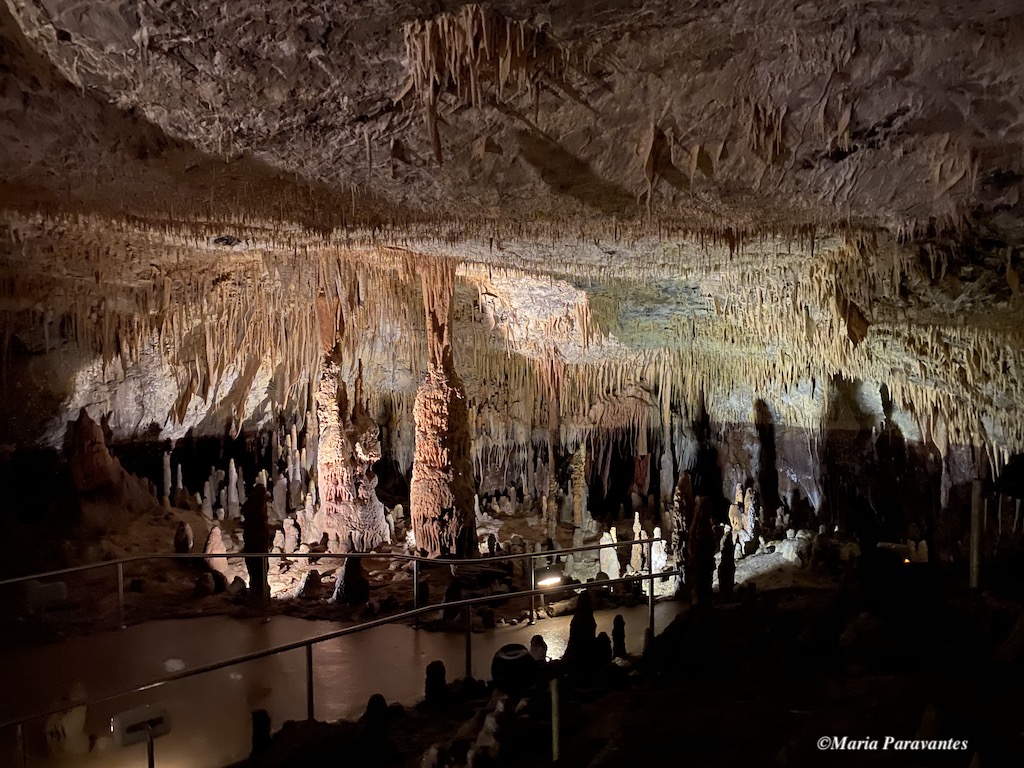
Dragons and bears, elves and giants come to life in one of the most mystical experiences you and your kids can have in a little known cave in the Peloponnese that is home to some of the most beautiful art works ‘sculpted’ by nature herself over thousands of years.
Welcome to Kapsia Cave! Think Disneyland-style enchanting forest of stalactites and stalagmites, from an explorer’s point of view that’s actually real.
Yes, a visit to Kapsia Cave is like you’re in the shoes of the man who first discovered this underground wonder in 1880.
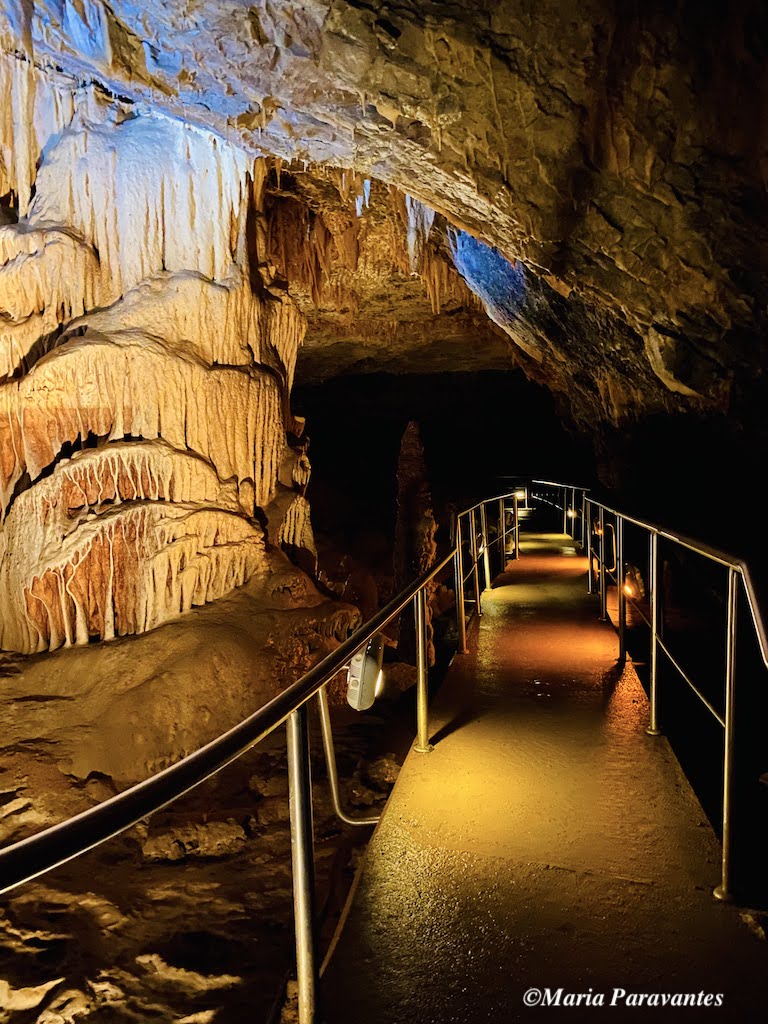
Located in the heart of the Mantineia plateau, near the ancient theater with the rugged Menalon mountain range as a backdrop, Kapsia Cave is a must for any traveler seeking to discover the unknown side of Greece. It’s also among the country’s most significant caves.
The exciting tour begins with a guide who takes you through a dark grey tunnel. You are introduced to the cave’s friendly inhabitants: a rare species of spider, some cave crickets known as “dolichopoda”– the greatest species diversity is actually found in Greece – and of course, playful bats staring at you from the bottom up.
Minutes later you enter the cavern which, in one word, is awesome. Kids will love the experience and so will adults. There, before you the magical world of stalactites and stalagmites comes to life.
As you enter the cavern, dancing sculptures made of limestone over millions of years are a breath away and beautifully showcased thanks to special lighting. The tiny ponds reflect the natural wonders adding to the aura, which is enhanced with the sound of dripping. This “dripping” is the ‘hand of nature‘ crafting these impressive formations known as “stalactites” and “stalagmites”.
►10 + 1 Perfect Places to Visit in Greece in Fall or Winter
Kapsia Cave & its Story
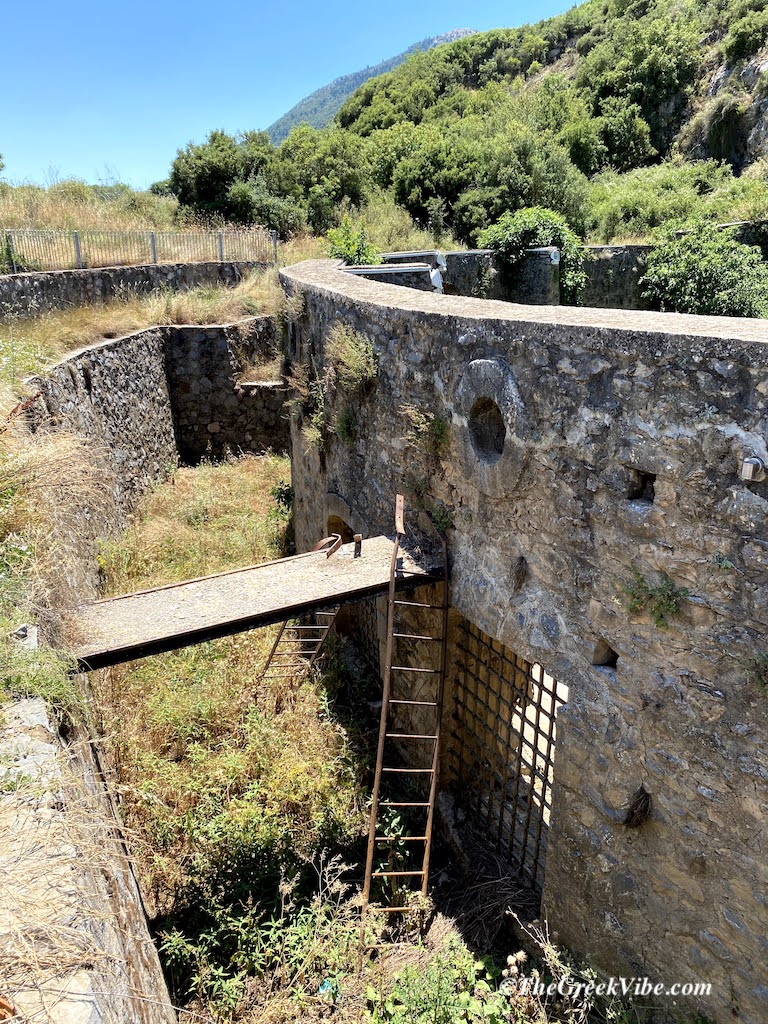
The cave was first found by an engineer working on a complex system of natural sinkholes which take rain water from the Mantineia Basin to the Argolid bay. A few years later, in 1887 French archaeologist Gustave Fougeres came across this spectacular cavern during excavation works on Ancient Mantineia a bit further away.
Since then, experts from across the globe can assess geological events through time thanks to the findings of the cave.
Earth lamps and clay tools tell a morbid tale. The guide will show you bone fragments and skeletons of people and children believed to have sought shelter in the cave before a massive flood some 1,700 years ago.
The flood left its mark which is evident from the terracotta color on the walls.
Kapsia Cave opened to the public for the first time in 2010 and so far 6,500m2 have been explored.
Just think, this captivating gallery of columns, corals and curtains courtesy of Mother Nature is a perfectly preserved ‘picture’ of prehistoric life.
Stalactites and Stalagmites: The Difference
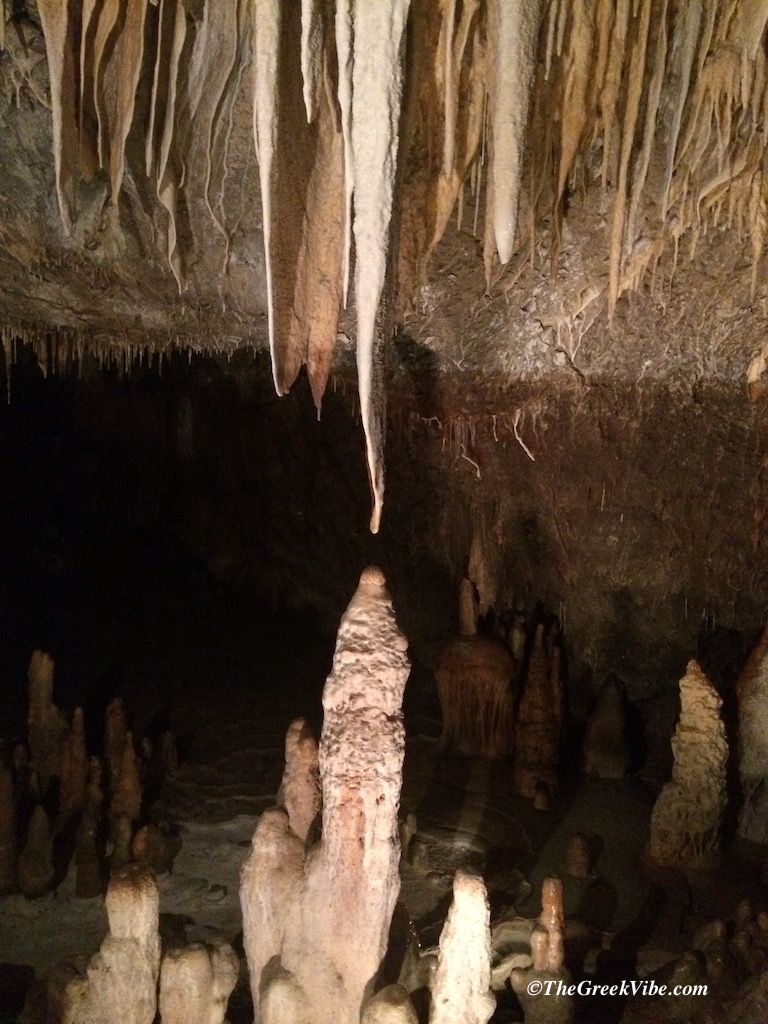
The words “stalagmite” and “stalactite” are both Greek deriving from the words “stala” which means “dripping or trickling” and the ancient Greek “stalasso” which means “that which drips”.
Stalactites and stalagmites form as water with minerals dissolves, evaporates or drops off. That’s why a closer look always reveals a drop of water at the end. When enough water accumulates or evaporates, a thin layer of mineral is deposited creating the formation, and all this… over thousands of years!
A stalactite hangs from the ceiling of the cave much like an icicle. A drop on the tip of a growing stalactite leaves a deposit only around its rim.
A stalagmite is thicker and rises upward from the bottom of the cavern through water dripping with the mineral deposited at its base.
Usually stalactites have their very own stalagmite, and at some point in time if they ‘meet’, they form a column known as a stalagnate.
To remember easier just think stalactites – c for ceiling – and stalagmites – g for ground.
►Asclepius & The Ancient Wellness Centers of Greece
Do Not Touch!

Attention! These natural marvels should never be touched. You wouldn’t want to destroy a million years’ worth of art in one touch, would you?
Touching the stalactite or stalagmite leaves behind an oily residue or dirt which stops the process.
👉🏼 Find the best hotel deals for you
The Hall of Miracles
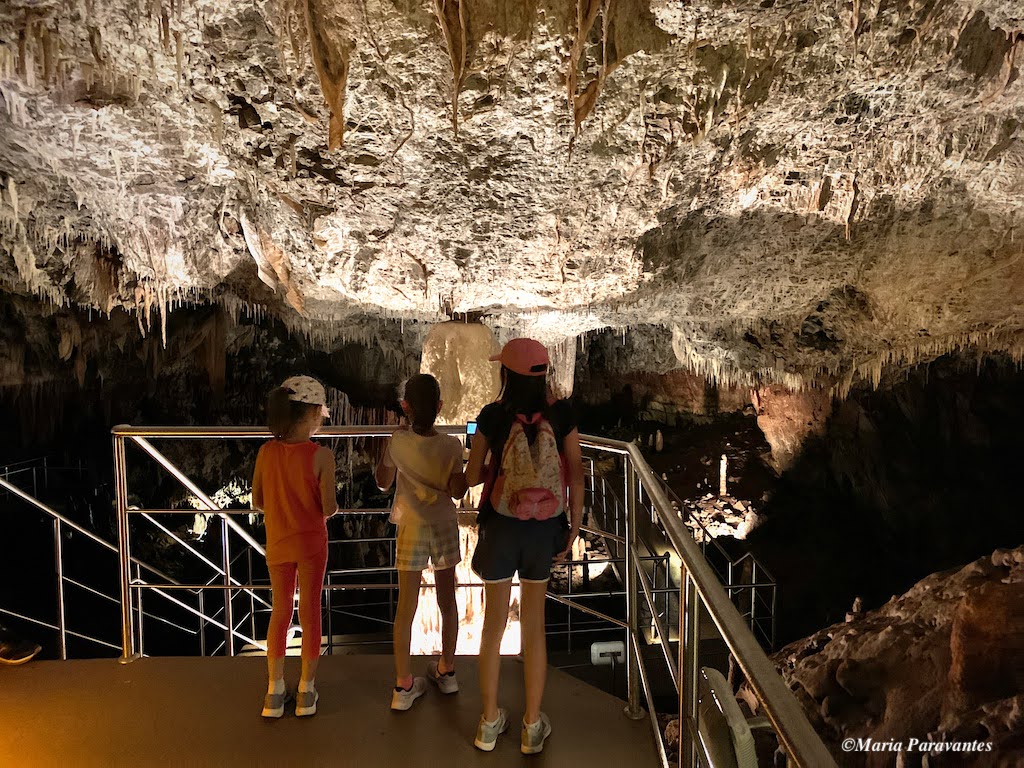
The cave’s Hall of Miracles is an art lover’s delight. It also leaves you spellbound thanks to the beautiful hues of terracotta red, okra, orange, blue, grey, and purple, which serve as a backdrop to the white stalactites.
👉🏼 Dream of visiting Greece? Start planning
The Greek Vibe Tips on Visiting Kapsia Cave
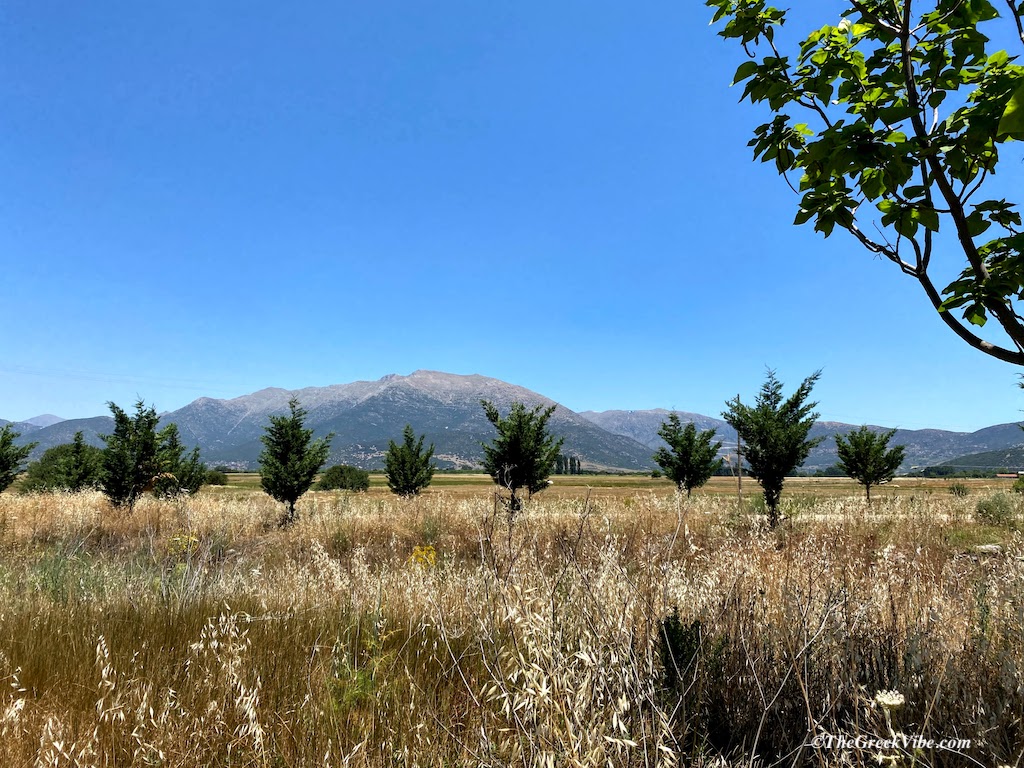
✓ On the road again… Set off from Athens towards the city of Tripolis a one-and-half-hour trip. Kapsia Cave is 15km outside Tripolis on the road to ancient Mantineia and 1.5 km from Kapsia village.
✓ Settle down… in boutique hotels in the traditional Arcadia villages of Levidi, Dimitsana, or Vytina.
✓ Indulge in… wine at the Kalogris Organic Winery run with love by a family of dedicated winemakers, and in local foods: “baklava voutirou” is a must, the legendary orange cake at the Spilaio Kapsia Café right outside the cave where you can also buy local products, Tripoli graviera cheese, trachana pasta soup and much much more which I will cover in a new post.
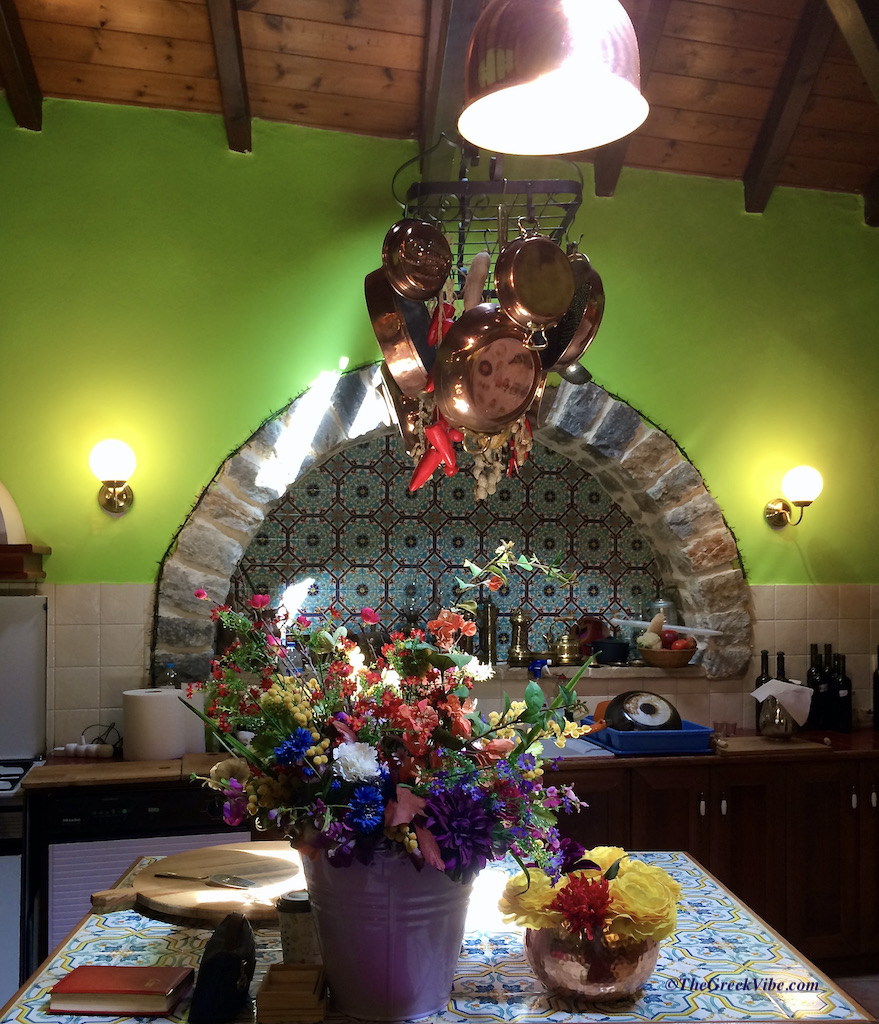
✓ Don’t forget to buy… walnuts, Tripoli apples, garlic, the famed Menalon Vanillia honey – the only Greek honey granted PDO (Protected Designation of Origin) from Mt Menalon, wine, vyssino spoon sweets, karydaki and kastano, graviera cheese, trachanas and hilopites pasta.
✓ Truth or dare… why not discover the wilder part of the region by hiking one of the routes along the Menalon Trail, a network of eight footpaths spanning 75km of forests, valleys and rivers, connecting the regions of Arcadia and Gortynia or visit the quirkiest Greek Orthodox church Agia Fotini.
►Hiking Greece: The Menalon Trail Experience
* Make sure to call 6951.003.299 before visiting as weather conditions may affect visitation during winter and transition seasons. Opening hours: weekdays and on Saturday from 9am to 3pm, Sundays 9am-4pm.
Enjoyed this Post? Share and Pin it!
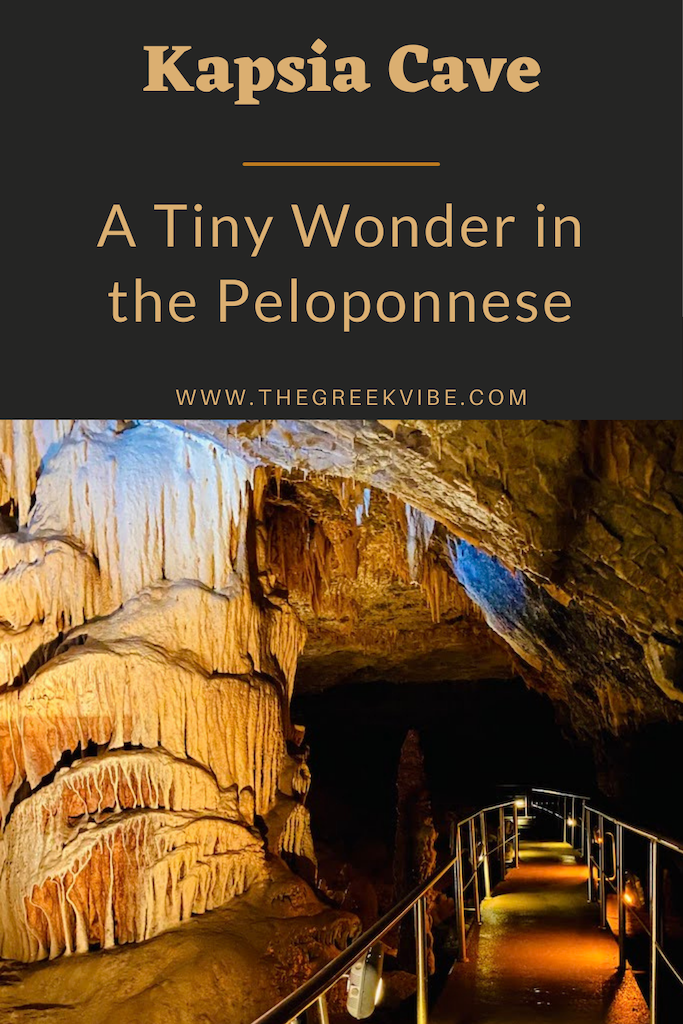

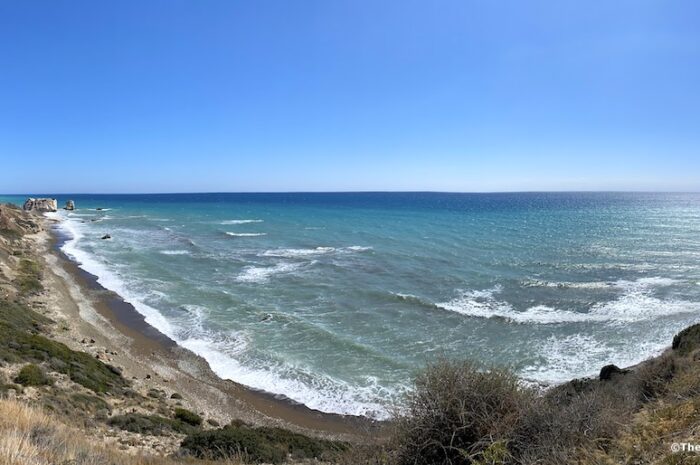
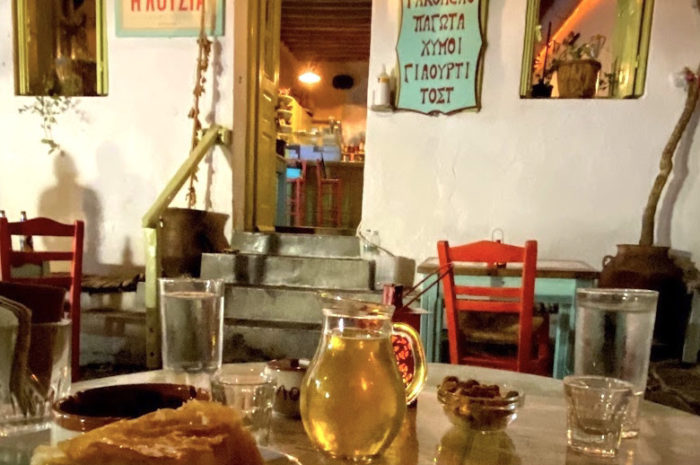
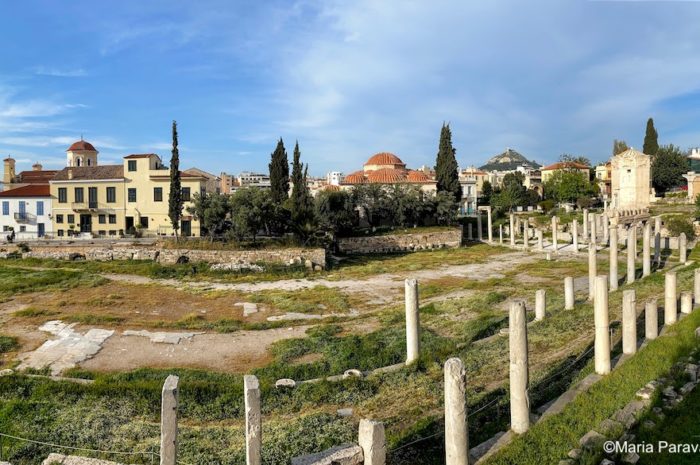
Wasn’t there a picture of a river named after a nymph on your web site
I would like to print it off but I can’t find it
The photo is in The Greek Vibe February newsletter. It depicts the River Neda in Messinia, Peloponnese.